The Novels About Abortion That Everyone Should Read
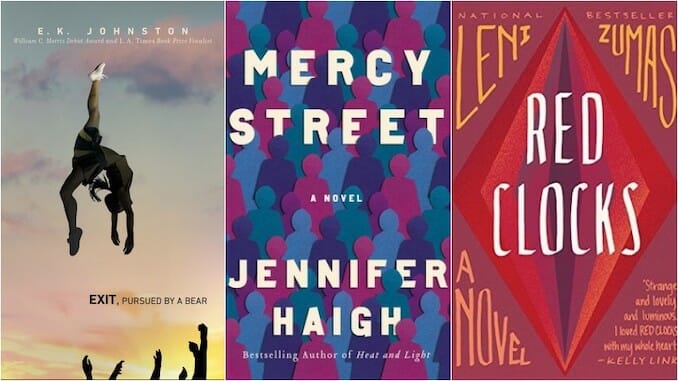
If we’re honest, there really aren’t enough novels that deal with abortion. Like much of our popular culture, even the most critically acclaimed books tend to skirt around the issue or speak about the process and the fraught emotions around it with vague euphemisms. And in the wake of the Supreme Court decision that rolled back Roe v. Wade, the nearly 50-year-old case that established Americans’ right to abortion, that’s something that should (and hopefully will in the months and years to come) change.
But in the meantime, if you’re looking for novels that deal with myriad issues surrounding abortion, from the complex reasons people choose to end pregnancies to the horrifying things that can happen in a world that denies women bodily autonomy, we have some recommendations for you.
![]()
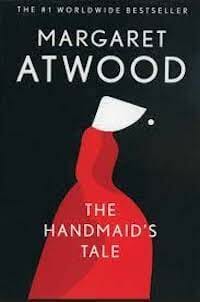 The Handmaid’s Tale by Margaret Atwood Much of Margaret Atwood’s famous dystopian novel The Handmaid’s Tale is now firmly ensconced in the pop culture mainstream, thanks to both Hulu’s award-winning prestige television adaptation and the rapid erosion of reproductive freedoms in various states around the country. (And that was before the U.S. Supreme Court overturned Roe v. Wade.) Protestors can now frequently be seen garbed in the now-familiar red robes of Atwood’s handmaids, with signs referencing various scenes or slogans from the streaming series. But, if you haven’t read Atwood’s novel, now is a sadly perfect time.
The Handmaid’s Tale by Margaret Atwood Much of Margaret Atwood’s famous dystopian novel The Handmaid’s Tale is now firmly ensconced in the pop culture mainstream, thanks to both Hulu’s award-winning prestige television adaptation and the rapid erosion of reproductive freedoms in various states around the country. (And that was before the U.S. Supreme Court overturned Roe v. Wade.) Protestors can now frequently be seen garbed in the now-familiar red robes of Atwood’s handmaids, with signs referencing various scenes or slogans from the streaming series. But, if you haven’t read Atwood’s novel, now is a sadly perfect time.
Originally published in 1985, The Handmaid’s Tale suddenly feels almost unbearably prescient, thanks to the ways that it imagines the United States transformed into the Republic of Gilead, a totalitarian theocracy where the handful of women still capable of bearing children are stripped of their names and agency and forced to serve as broodmares for the elite. An uncomfortable story of oppression, abuse, and sexual violence, Atwood’s novel forthrightly peels back the dark underbelly of onerous ?reproductive laws—particularly those imposed by male legislators.
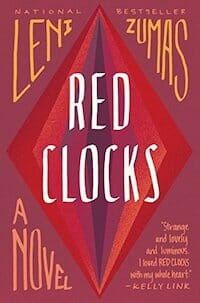 Red Clocks by Leni Zumas Leni Zumas’s speculative dystopian novel Red Clocks imagines life in an America where abortion is entirely illegal—a world that sadly doesn’t seem as out of the realm of possibility as it might have just a few short years ago. In it, Personhood Amendment has granted the rights of life, liberty, and property to every embryo: As a result, IVF is outlawed and young girls are jailed for trying to end pregnancies. The government now requires adoptive parents to be married. A sprawling Pink Wall along the northern border keeps desperate girls and women from seeking relief in Canada.
Red Clocks by Leni Zumas Leni Zumas’s speculative dystopian novel Red Clocks imagines life in an America where abortion is entirely illegal—a world that sadly doesn’t seem as out of the realm of possibility as it might have just a few short years ago. In it, Personhood Amendment has granted the rights of life, liberty, and property to every embryo: As a result, IVF is outlawed and young girls are jailed for trying to end pregnancies. The government now requires adoptive parents to be married. A sprawling Pink Wall along the northern border keeps desperate girls and women from seeking relief in Canada.
Red Clocks follows the stories of four very different women in a small Oregon town, all at very different stages of their lives: Ro, a high school teacher who wants to have a child on her own; Sue, a mother who’s raising two children in the house she grew up in and never managed to leave; Gin, a hermit who offers home remedies to local women with few resources; and Mattie, a teenager, who loses her virginity to a boy who refuses to wear protection.
More than a story of the way legal restrictions can and are being used to police women’s choices and physical bodies, Red Clocks is also deeply interested in the way women are encouraged to police and compete with one another, rather than joining forces against an oppressive society.
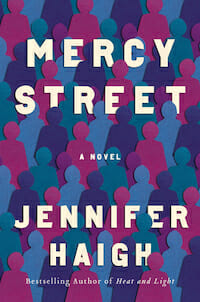 Mercy Street by Jennifer Haigh
Mercy Street by Jennifer Haigh
In the wake of the Supreme Court’s decision to overturn Roe v. Wade, Jennifer Haigh’s 2022 novel feels uncomfortably honest and necessary. Mercy Street follows the story of Claudia, an abortion clinic counselor who deals with everything from aggressive protestors and bomb threats to young girls who don’t entirely understand how their own bodies work.
It is a story about the practical realities of women’s healthcare is remarkably straightforward and sympathetic. (Even, often, toward those characters who would consider themselves pro-life warriors.) Haigh displays a deft innate understanding that abortion is a choice many women may make for vastly different reasons and that those reasons often intersect with issues of poverty, illness, religion, or all of the above.
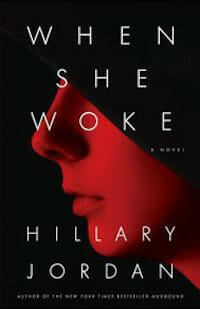 When She Woke by Hillary Jordan When She Woke is Hillary Jordan’s uncomfortably timely pseudo-reimagining of Nathaniel Hawthorne’s The Scarlet Letter set in a dystopian America where abortion is illegal and criminals—of all stripes—are “melachromed” or tinted physically with a specific color to match the crime they committed.
When She Woke by Hillary Jordan When She Woke is Hillary Jordan’s uncomfortably timely pseudo-reimagining of Nathaniel Hawthorne’s The Scarlet Letter set in a dystopian America where abortion is illegal and criminals—of all stripes—are “melachromed” or tinted physically with a specific color to match the crime they committed.
And when Hannah Payne wakes up to serve her long sentence, she finds her body is dyed red, because of a child she aborted. Like Hester Prynne before her, she refuses to reveal the name of the man who got her pregnant, nor will she name the provider who performed the abortion. While Hannah is initially confined after her “melachroming”, she is broadcast on television, when she is released she’s tagged with a tracker that allows anyone on the internet to see her location and monitor her behavior. So-called “chromes” are publicly marginalized and forced to eke out lives on the edges of society: living in rough parts of town, struggling to find jobs, and repeatedly subject to attacks and abuse. It’s a grim, disturbing picture and one that’s powerful and memorable enough to make up for many of the book’s narrative flaws.
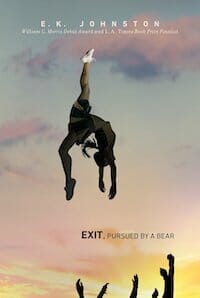 Exit, Pursued by a Bear by E.K. Johnston A heartbreaking and harrowing story of trauma and survival, Exit, Pursued by a Bear follows Hermione Winter, star and captain of her small town high school cheerleading squad. And in tiny Palermo Springs that means a lot—here, the cheerleaders are the main attraction, talented athletes and the girls everyone wants to be.
Exit, Pursued by a Bear by E.K. Johnston A heartbreaking and harrowing story of trauma and survival, Exit, Pursued by a Bear follows Hermione Winter, star and captain of her small town high school cheerleading squad. And in tiny Palermo Springs that means a lot—here, the cheerleaders are the main attraction, talented athletes and the girls everyone wants to be.
But when Hermione learns she is pregnant after being drugged and raped at cheer camp, the dark side of small-town life emerges. Neighbors and former friends turn against her and she’s suddenly a social pariah, even as she faces a gut-wrenching choice about how to move on and what she wants her future to look like. Despite its emotional—and often dark themes—this is a strangely hopeful tale, and Hermione’s furious determination to become no one’s cautionary tale.
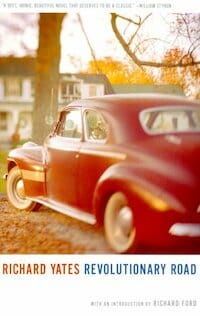 Revolutionary Road by Robert Yates While Robert Yates’ debut novel was originally published in 1961 (prior to the landmark Roe v. Wade decision that—at least for a time—legalized abortion), its depiction of a Connecticut couple whose already difficult marriage is compounded by an unintended pregnancy feels uncomfortably timely.
Revolutionary Road by Robert Yates While Robert Yates’ debut novel was originally published in 1961 (prior to the landmark Roe v. Wade decision that—at least for a time—legalized abortion), its depiction of a Connecticut couple whose already difficult marriage is compounded by an unintended pregnancy feels uncomfortably timely.
An indictment of various aspects of 1950s life, including questions of female autonomy and workforce participation, Revolutionary Road also features an attempt at an illegal at-home abortion, and the consequences thereof. Shocking perhaps, but maybe that’s what we need right now.
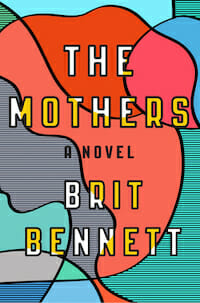 The Mothers by Brit Bennett
The Mothers by Brit Bennett
Brit Bennet’s debut novel The Mothers follows the story of a 17-year-old girl named Nadia who loses herself in a passionate relationship with Luke, the pastor’s son at her church, in the wake of her mother’s suicide. Her decision to terminate this pregnancy is a difficult one—one that she doesn’t regret necessarily, but one that she regrets needing to make—but largely driven by her desire to go to college, to attend law school, to build a different kind of life for herself than the one her mother had. Her choice will reverberate through her own life and that of Luke’s, who pays for her procedure and promptly abandons her at the abortion clinic.
The Mothers is not just beautifully written, it’s a deft and nuanced depiction of the incredibly personal nature of the issues surrounding abortion and women’s reproductive health. Nadia’s complicated feelings about her pregnancy and her decision to terminate it are messy and honest—and something that colors her life forever after.
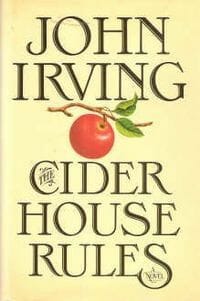 The Cider House Rules by John Irving
The Cider House Rules by John Irving
John Irving’s 1983 classic The Cider House Rules is set in rural Maine in the early half of the 20th century and follows the story of an obstetrician named Wilbur Larch who also helps women give birth and also performs illegal abortions. Homer Wells, the young orphan who trains as his apprentice, is morally opposed to abortion and struggles with his mentor’s choice to perform the procedure, ultimately quitting and going to work on a cider farm. But, while there, he must reevaluate his principles after he falls in love with another man’s girlfriend and a farm worker becomes pregnant by a family member.
This is perhaps the most basic way to describe this story, but it’s hard to describe the empathy with which Irving treats all these characters—no matter what their personal beliefs or choices may be. A sprawling intricate tale that deftly deals with everything from politics and situational ethics to what we owe to the most vulnerable and marginalized among us, it’s an emotional gut-punch that ultimately brings Homer full circle, and gives him a greater understanding of the suffering and struggles of others.
?
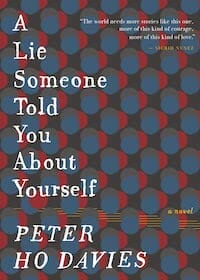 A Lie Someone Told You About Yourself by Peter Ho Davies
A Lie Someone Told You About Yourself by Peter Ho Davies
A unique novel about fatherhood, pregnancy and abortion told from the perspective of a man, Peter Ho Davies’ A Lie Someone Told You About Yourself is an emotional and raw story of a couple who chooses to terminate a pregnancy after prenatal tests determine something is wrong. But the specter of the child they never had looms large over their relationship and their second pregnancy, especially when their son begins to struggle developmentally.
Davies’s spare prose and sensitive, unsentimental portrayal of the relationship dynamics between parents and their children as well as one another is both well done and moving. The story’s conclusion is both unexpectedly hopeful and deeply honest, and rings with truth throughout.
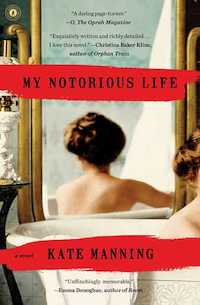 My Notorious Life by Kate Manning
My Notorious Life by Kate Manning
Kate Manning’s novel is the fictionalized tale of the life of the infamous and, yes, very notorious, Madame Restell, a 19th-century female physician and abortionist who was once called “the Wickedest Woman in New York”. One part mystery, one part family saga, and one part historical memoir My Notorious Life follows the story of Axie Muldoon, a character inspired by the real-life Ann Lohman, here reimagined as the poor child of Irish immigrants.
Forcibly separated from her parents and apprenticed to a doctor, Axie manages to turn the sale of a questionable female elixir into a thriving midwifery business while flouting the law in the name of women’s reproductive rights. (The real Madame Restell was famous for charging clients on a sliding scale based on social class, and funding her business—and life—through the fees from her wealthiest clients.) Axie rises from her grim tenement beginnings to the splendor of a Fifth Avenue mansion, even as the story highlights the desperate choices faced by women in a time when not only abortion was outlawed, but birth control as well, and their choices and opportunities were largely determined by their fertility.
Lacy Baugher Milas is the Books Editor at Paste Magazine, but loves nerding out about all sorts of pop culture. You can find her on Twitter @LacyMB.